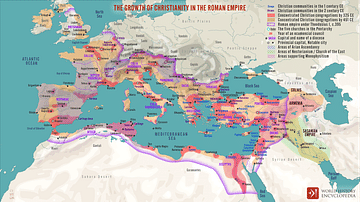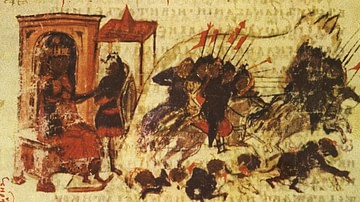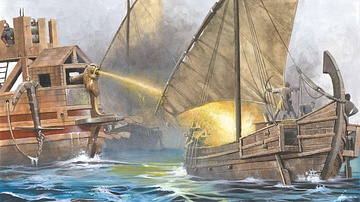Illustration
This map illustrates Constantine I's (also known as Constantine the Great, c. 272-337 CE) rise to power, beginning with his proclamation as emperor by his troops in 306 CE and solidified through key military victories, including the Battle of Milvian Bridge in 312 CE, which led to Constantine’s Conversion to Christianity. By 324 CE, he became the sole ruler of the Roman Empire after defeating Licinius, his rival and the Eastern Roman Emperor. During his reign, from 324 to 337 CE, Constantine expanded upon the administrative reforms of Diocletian (r. 284-305 CE), further developing the system of prefectures and dioceses, and founded a new capital at Constantinople, laying the foundations for the Christian Byzantine Empire.
About the Author
External Links
Cite This Work
APA Style
Netchev, S. (2024, August 26). Roman Empire under Constantine, 324-337 CE. World History Encyclopedia. Retrieved from https://www.worldhistory.org/image/19366/roman-empire-under-constantine-324-337-ce/
Chicago Style
Netchev, Simeon. "Roman Empire under Constantine, 324-337 CE." World History Encyclopedia. Last modified August 26, 2024. https://www.worldhistory.org/image/19366/roman-empire-under-constantine-324-337-ce/.
MLA Style
Netchev, Simeon. "Roman Empire under Constantine, 324-337 CE." World History Encyclopedia. World History Encyclopedia, 26 Aug 2024, https://www.worldhistory.org/image/19366/roman-empire-under-constantine-324-337-ce/. Web. 04 May 2025.








